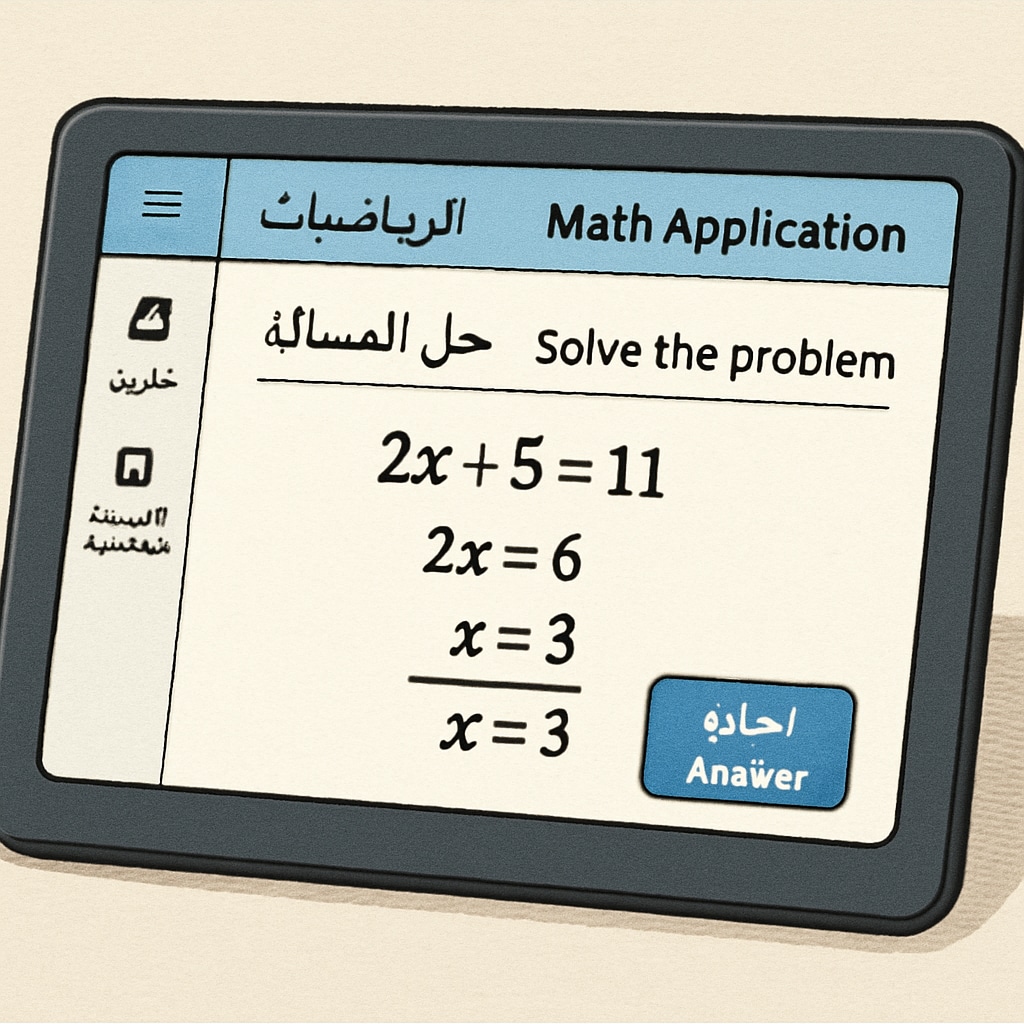High school math, teaching challenges, and Arabic-language education present unique opportunities for improvement. For educators working in Arabic-speaking environments, balancing linguistic precision with mathematical rigor can be particularly complex. This article examines common hurdles in high school math instruction and highlights actionable strategies to optimize teaching content, ultimately aiming to support educators in enhancing student understanding and achievement.
Recognizing Common Challenges in High School Math
High school math often involves abstract concepts such as calculus, trigonometry, and statistics, which are inherently difficult for many students to grasp. In Arabic-language classrooms, these challenges are compounded by the need for clear translations and culturally relevant examples. For example, terms like “derivative” or “integral” may require precise linguistic adaptation to ensure they resonate with students.
Several typical difficulties faced by students include:
- Understanding abstract concepts due to insufficient real-world applications.
- Language barriers when mathematical terminology is poorly translated.
- Lack of engaging teaching tools tailored to Arabic-speaking learners.

Optimizing Teaching Content for Arabic-Language Classrooms
To address these challenges, educators can adopt several strategies to enhance the learning experience. These methods focus on both improving content delivery and fostering student engagement. Optimization techniques include:
- Cultural Contextualization: Using culturally relevant examples to explain mathematical concepts, such as geometry in Islamic architecture or statistical analysis in regional data.
- Interactive Tools: Incorporating digital platforms and visual aids that cater to Arabic-speaking students, such as localized math apps or bilingual resources.
- Professional Development: Training teachers in both mathematical pedagogy and effective Arabic-language instruction techniques.
For example, leveraging digital tools like Khan Academy or localized educational resources can significantly improve comprehension. Additionally, educators can consult sources like Wikipedia’s Mathematics Education page for broader insights into global practices.

Fostering Student Engagement Through Innovative Strategies
Engagement is key to overcoming math-related challenges. Teachers can employ methods that actively involve students, such as collaborative problem-solving sessions or project-based learning. Additionally, gamification techniques, like turning math exercises into competitive games, can make learning more enjoyable and impactful.
Key strategies include:
- Encouraging peer-to-peer learning in diverse groups to build confidence.
- Integrating storytelling to explain complex ideas, making them relatable and memorable.
- Using formative assessments to identify gaps and adjust teaching methods accordingly.
By combining these strategies with optimized content delivery, educators can help students build a stronger foundation in mathematics, even in linguistically diverse settings.
Conclusion: Bridging the Gap in Multilingual Math Education
High school math challenges, teaching difficulties, and Arabic-language education require tailored solutions to ensure effective learning outcomes. By recognizing common hurdles, optimizing teaching materials, and fostering innovative engagement techniques, educators can empower their students to excel in mathematics. These strategies not only break down barriers but also create a more inclusive and successful learning environment.
For educators seeking to enhance their teaching practices, collaboration and continued professional development are essential. Together, we can ensure that all students, regardless of their linguistic background, gain the skills and confidence needed to thrive in math and beyond.
Readability guidance: Utilize short paragraphs and lists to summarize key points. Ensure transitions between ideas are smooth and effective. Maintain a balance between active and passive voice, avoiding excessive use of long sentences.


